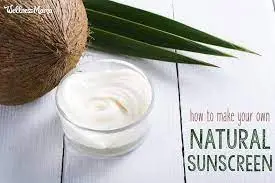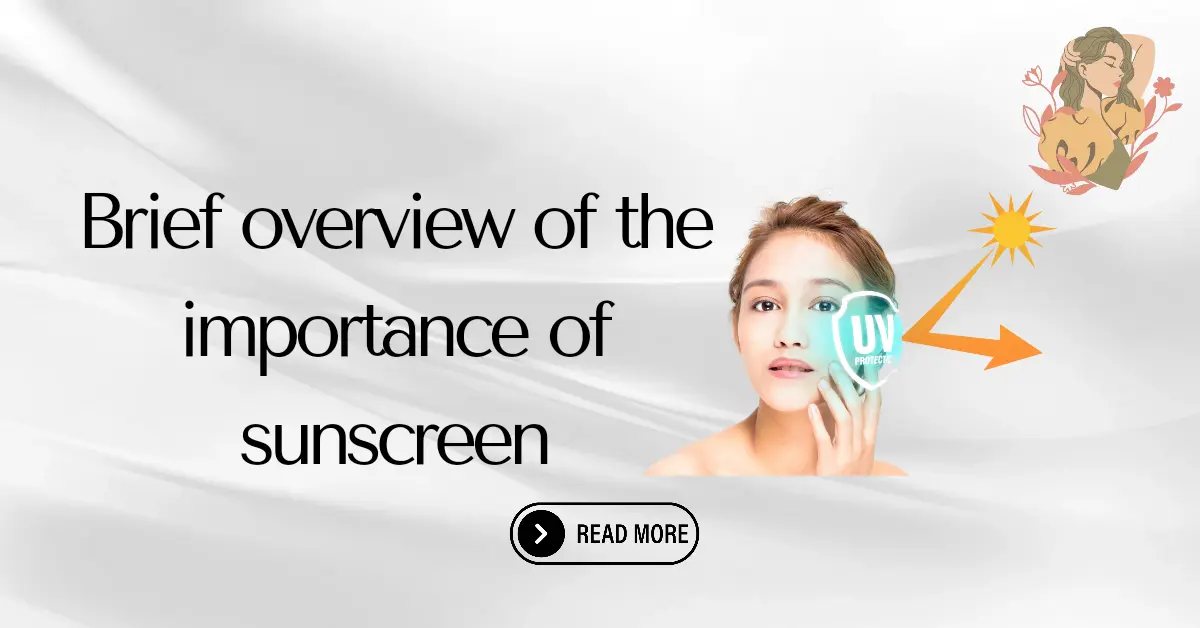
Sunscreen, a seemingly mundane and often overlooked part of our daily routine, holds within its unassuming bottle the power to protect us from the sun’s relentless assault on our skin. Beyond its practical purpose, sunscreen embodies a rich history entwined with cultural significance, scientific innovation, and even controversy. In this article, we will peel back the layers of sunscreen to uncover its fascinating journey from ancient civilizations’ crude forms of sun protection to cutting-edge formulations designed for today’s discerning consumers. So get ready to delve into the world of sunscreen and discover why it’s more than just a beach essential—it’s a testament to humanity’s quest for preservation and well-being under the sun’s watchful gaze.
Different types of sunscreens (chemical vs. physical)

When it comes to choosing sunscreens, understanding the difference between chemical and physical sunscreens is essential. Chemical sunscreens work by absorbing UV rays and converting them into heat, while physical sunscreens create a barrier that reflects and scatters UV rays away from the skin. While chemical sunscreens tend to be lighter and easier to apply, they can irritate sensitive skin. On the other hand, physical sunscreens are often preferred for those with sensitive skin, as they contain natural minerals like zinc oxide or titanium dioxide.
Proper application techniques
Similarly, skincare products like serums and moisturizers should be applied in upward motions to help promote lift and tightening of the skin. This technique not only ensures even distribution of the product but also helps stimulate circulation for better absorption. Understanding these proper application techniques can enhance your overall beauty routine and give you a more polished look.
- How much sunscreen to apply
We’ve all heard the standard advice to apply a generous amount of sunscreen, but what does that really mean? According to experts, the recommended amount of sunscreen for full protection is about one ounce – roughly equivalent to a shot glass. Many people tend to underestimate the amount needed, applying far less than necessary for effective sun protection. To put it into perspective, a nickel-sized dollop won’t cover your entire face and neck adequately.
2. Reapplication guidelines
Don’t be discouraged by a prior rejection; use it as an opportunity for introspection and growth. Approach the reapplication process to showcase your persistence, determination, and continuous improvement. By embracing this mindset and diligently following reapplication guidelines, you can present a more compelling candidacy demonstrating your resilience and commitment to your goals.
Dispelling common sunscreen myths

Myth #1: Sunscreen is only necessary on sunny days.
Many people believe that sunscreen is only necessary when the sun is shining brightly. However, harmful UV rays can penetrate through clouds, and even on overcast or cloudy days, up to 80% of these rays can still reach your skin. So, regardless of the weather, applying sunscreen should be a non-negotiable part of your daily skincare routine.
Myth #2: Darker skin tones don’t need sunscreen.
There’s a common misconception that individuals with darker skin tones are not as susceptible to sun damage and therefore don’t need to wear sunscreen. In reality, everyone, regardless of their skin tone, is at risk for UV-related skin damage and should use sunscreen regularly. This misinformation contributes to higher rates of skin cancer in certain demographic groups and highlights the importance of educating everyone about the necessity of sun protection for all skin types.
Overview of the latest advancements in sunscreen technology
Another exciting development is the incorporation of antioxidants such as vitamins C and E into sunscreen formulations. These antioxidants work alongside traditional UV filters to provide enhanced protection against free radicals generated by UV exposure, effectively reducing oxidative damage to the skin. Additionally, some sunscreens now feature DNA repair enzymes that help reverse UV-induced DNA damage, offering a new level of defense against skin aging and cancer. With these cutting-edge advancements, sunscreen products are becoming more effective than ever at safeguarding our skin from the sun’s harmful rays.
Everyday sunscreen for daily wear
It’s important to choose a broad-spectrum SPF 30 or higher sunscreen that protects against both UVA and UVB rays. Incorporating sunscreen into your daily routine may seem like an extra step, but it’s an investment in your skin’s long-term health. Not only does wearing sunscreen protect against potential skin damage, but it also sets the foundation for maintaining healthy and youthful-looking skin for years to come.
Homemade sunscreen options using natural ingredients

The notion of creating homemade sunscreen using natural ingredients has gained popularity as people become more conscious of the potential harms of commercial sunscreens. There’s a plethora of natural ingredients that are said to protect against the sun’s harmful rays, including coconut oil, shea butter, and non-nano zinc oxide. However, it’s important to approach this DIY approach with caution as there is limited scientific evidence on the efficacy and SPF value of these homemade options. Additionally, many natural ingredients may not offer sufficient protection against both UVA and UVB rays.
Celebrity Sunscreen Routines

As celebrities are often in the spotlight, it’s no surprise that they prioritize sunscreen as a crucial part of their skincare routines. Many A-listers opt for high-SPF sunscreens to protect their skin from harmful UV rays and maintain a youthful appearance. From luxurious beach vacations to red-carpet events, celebrities are always conscious about safeguarding their skin from sun damage.
Environmental Impact of Sunscreen
The environmental impact of sunscreen has become a growing concern as more research sheds light on the detrimental effects of certain chemical compounds found in common sunscreens. For instance, oxybenzone and cinoxate, commonly present in many popular sunscreens, have been linked to coral bleaching and harmful effects on marine life. As swimmers and beachgoers apply sunscreen, the chemicals wash off into the oceans, threatening delicate ecosystems and contributing to the degradation of coral reefs.
Conclusion,
Sunscreen plays a crucial role in protecting our skin from the harmful effects of the sun’s rays. By applying sunscreen regularly, individuals can reduce their risk of developing skin cancer and premature aging. It is important to choose a broad-spectrum sunscreen with a high SPF and to apply it generously before going outside. Remember that sunscreen should be reapplied every two hours, especially after swimming or sweating. Ultimately, incorporating sunscreen into your daily routine is an essential step in maintaining healthy and youthful-looking skin for years to come. So, make sure to prioritize sun protection by using sunscreen every day!

